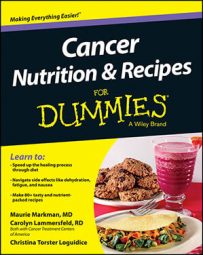Studies have shown that eating whole grains instead of refined grains lowers the risk of many chronic diseases, including cancer. So, it’s no surprise that the New American Plate, designed by the American Institute for Cancer Research (AICR), emphasizes grains along with fruits, vegetables, and beans.
The AICR recommends that you aim for meals made up of at least two-thirds of these foods, with only one-third of your plate containing protein-based foods like meat or poultry. Following is a little info on some of the most commonly consumed grains:
Amaranth: Considered a pseudo-cereal because it doesn’t stem from the Poaceae family of plants, amaranth is treated as a whole grain because of its similar nutrient profile to true cereal grains. Amaranth is considered a protein powerhouse, is naturally gluten free, and is the only grain documented to contain vitamin C.
Barley: Related to the rhubarb plant, barley is not technically a grain, but it has been adopted as a grain because of its comparable nutrient profile. Barley contains high levels of soluble beta-glucan fiber, which has been associated with improved immune system function.
Buckwheat: Buckwheat contains higher levels of zinc, copper, and manganese than other cereal grains. Because this grain has been favored worldwide, many foods contain buckwheat — from Japanese soba noodles to French crepes.
Corn: This whole grain also includes whole cornmeal and popcorn. Although corn has been considered a nutrient-poor starch, research is showing corn to be a healthy food. Eating corn with beans creates a complementary mix of amino acids that raises the protein value to humans.
Oats: Because of their naturally sweet flavor, oats are a common breakfast grain. Unlike other grains, oats never have their bran and germ removed, so regardless of whether they’re rolled or steel cut, you’re guaranteed to get a whole grain.
Quinoa: Related to beets and red chard, quinoa isn’t a true cereal grain, but like other pseudo-grains, it’s treated as a grain due to its similar nutrient profile. Quinoa is gluten free and one of the only plant foods that’s a complete protein, providing all the essential amino acids.
Rice (not white): Although brown rice is the best known and most studied whole-grain rice, there are numerous other varieties, including wild, red, black, and purple. Brown rice is high in manganese, with 1 cup providing 88 percent of your recommended dietary allowance (RDA) of this mineral.
Rye: Unlike other grains, rye has a high level of fiber in both its endosperm and bran. As a result, this grain ranks lower on the glycemic index than most other grains, making rye a good choice if you have diabetes. (The glycemic index is a measure of how fast blood glucose levels rise after eating a particular food.)
Sorghum: Also called milo, sorghum is a gluten-free grain that can be substituted for wheat flour in baked goods. Because its hull is edible, most of its nutrients are retained upon consumption.
Wheat: There are numerous varieties and forms of wheat, including bulgur, cracked wheat, durum, einkorn, emmer, farro, khorasan, spelt, and wheatberries. The nutrient profile of the various wheat varieties differ, but studies have shown whole wheat to be high in nutrients and fiber, reducing the risk of heart disease. Wheat has come to dominate the market because of its high amount of gluten, which is a stretchy protein that imparts a desirable texture to bread and baked goods.
For more information on these and other grains, visit the website of the Whole Grains Council. Broaden your palate by trying out these and other whole grains. You can find grain recipes at the Whole Grains Council recipes page.

